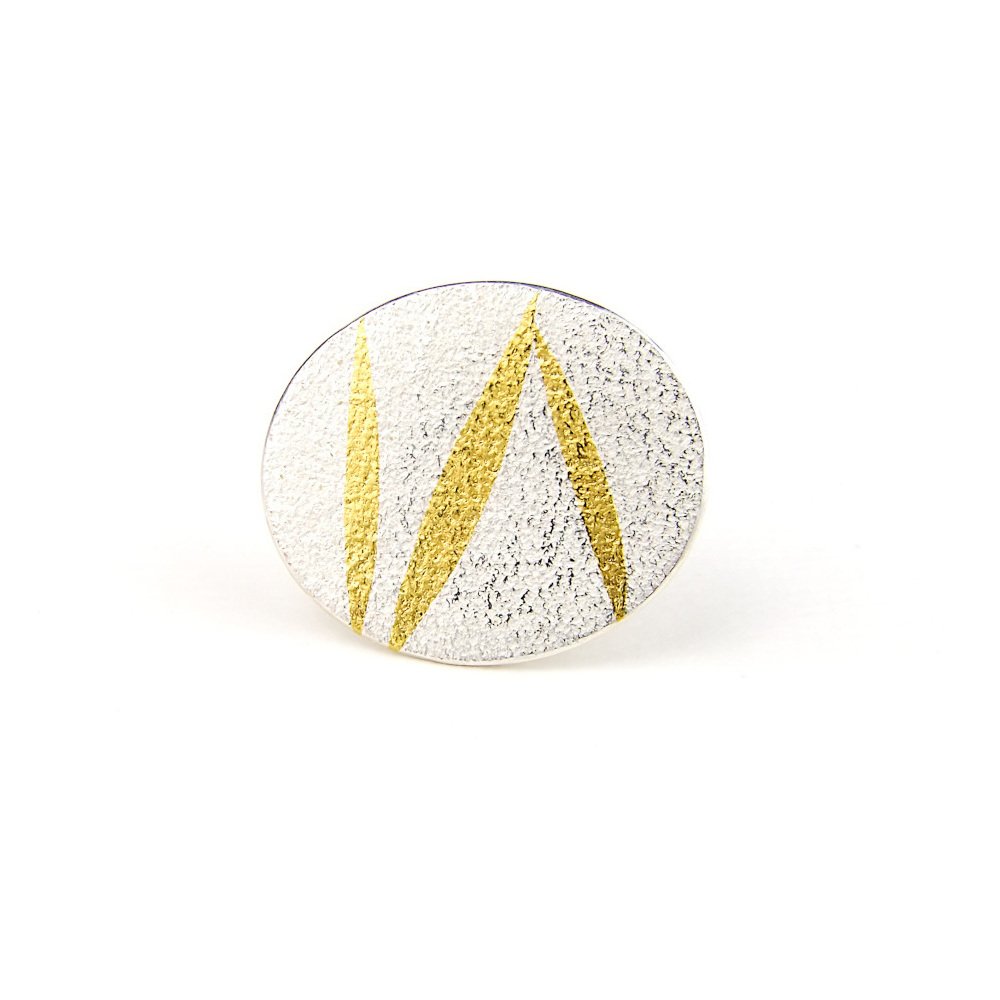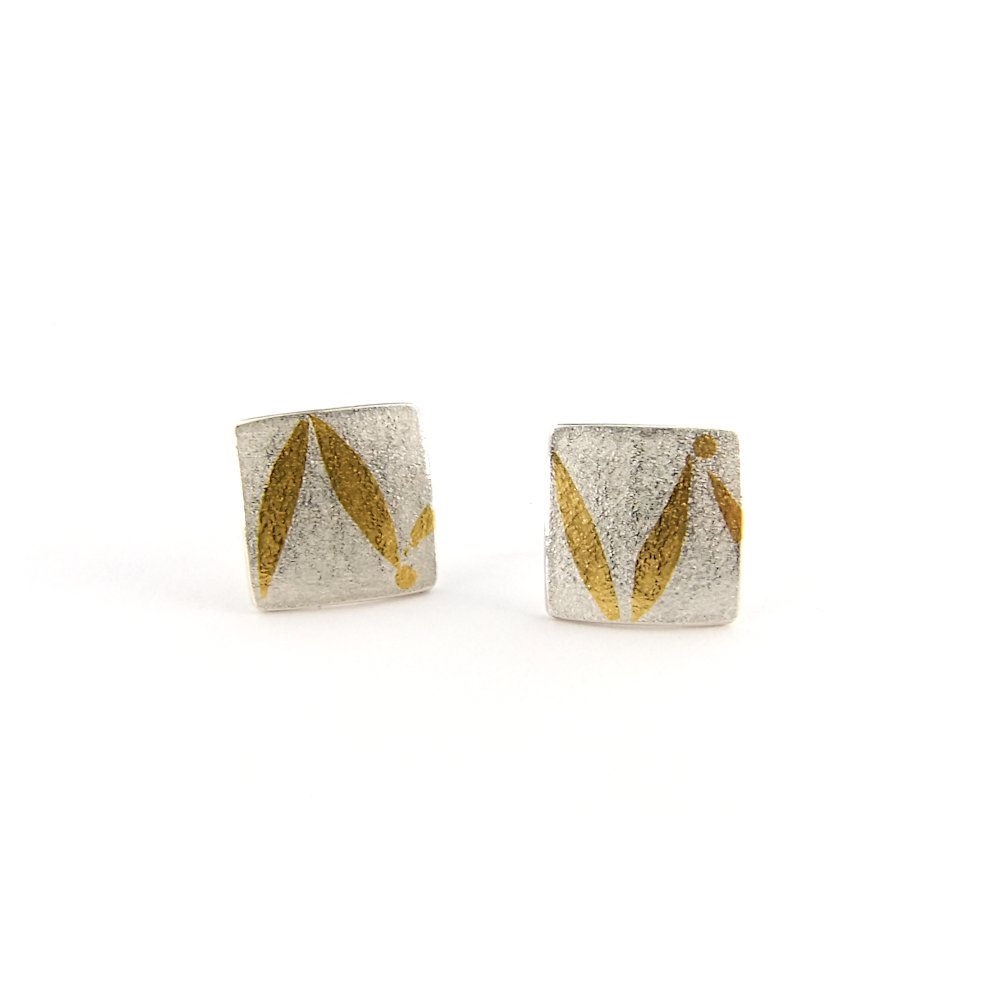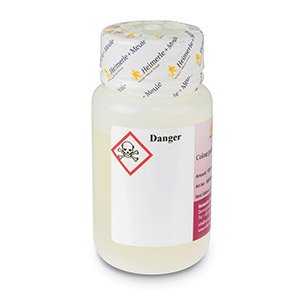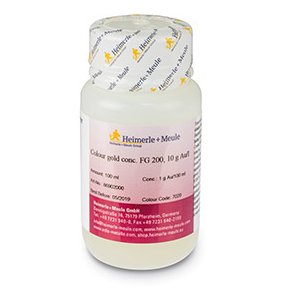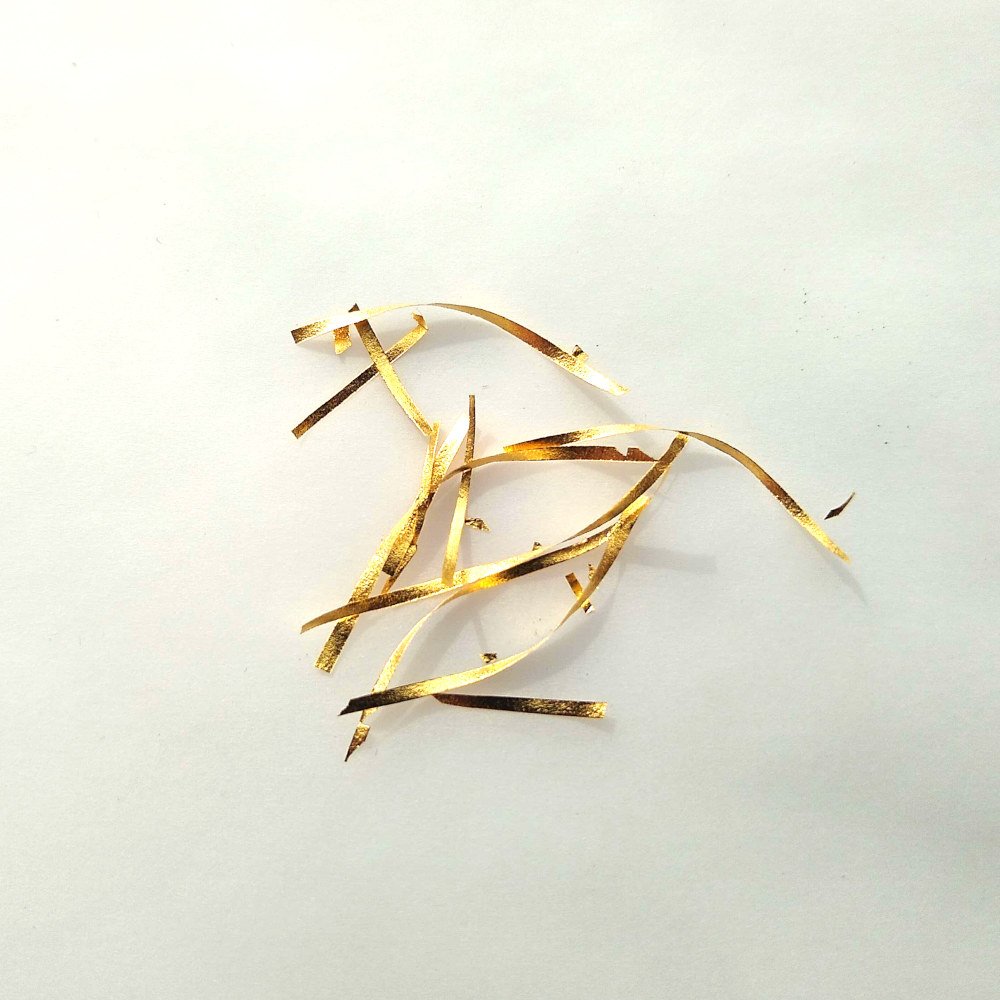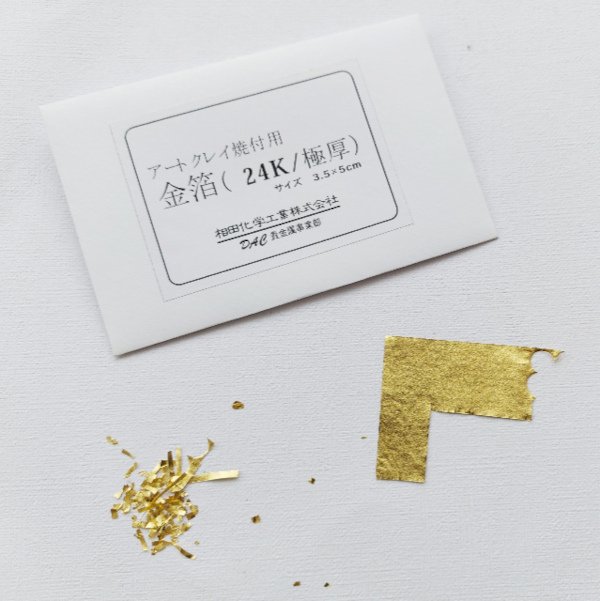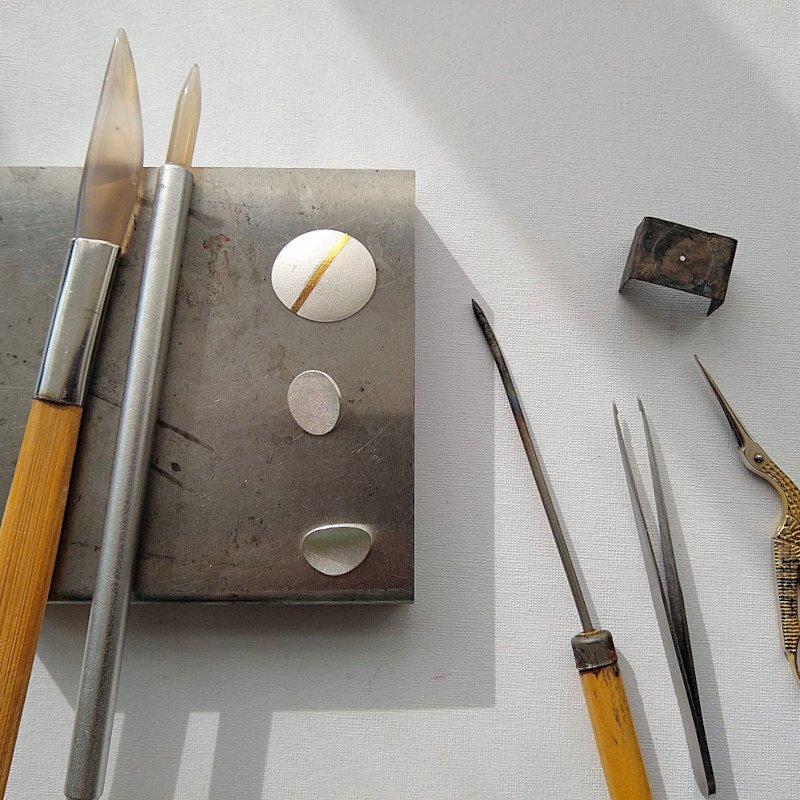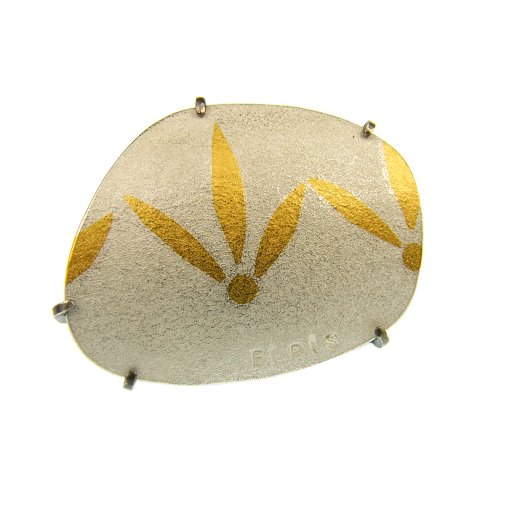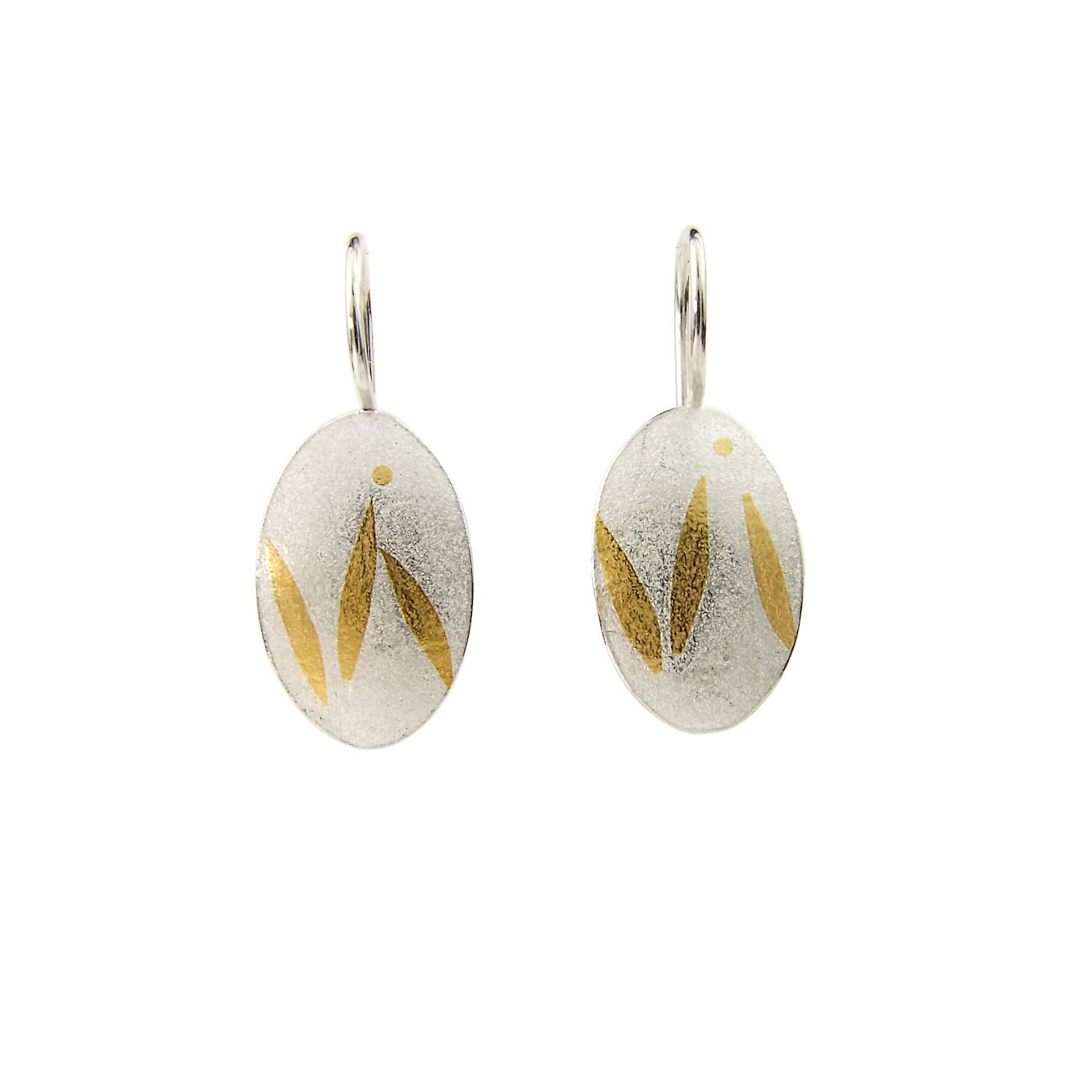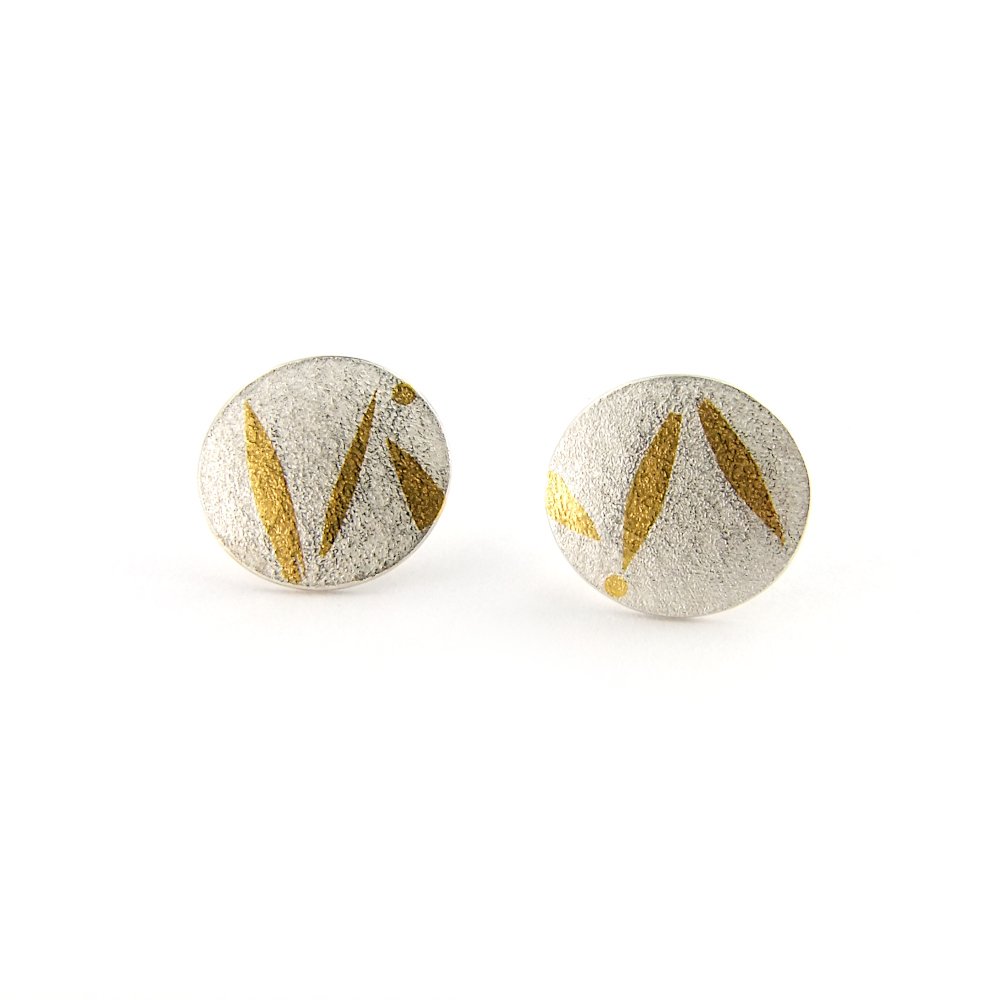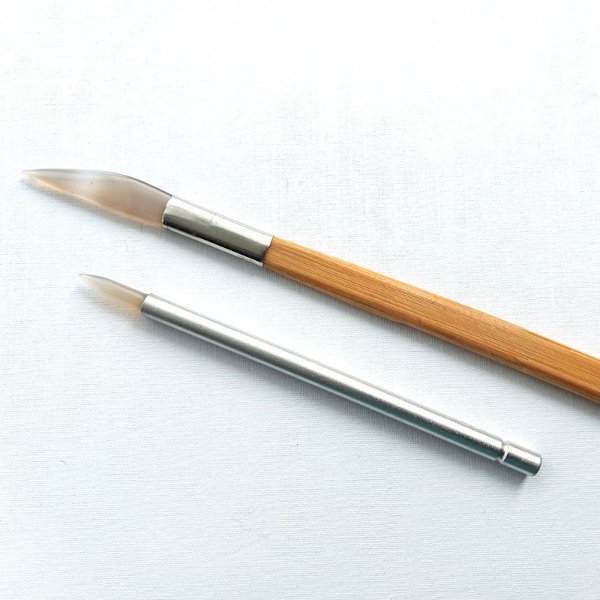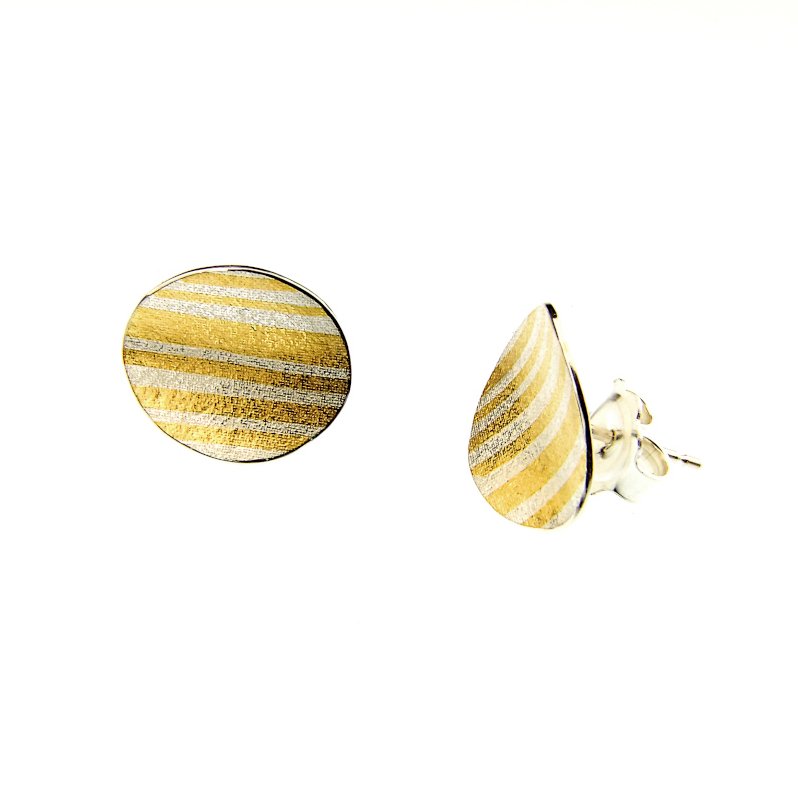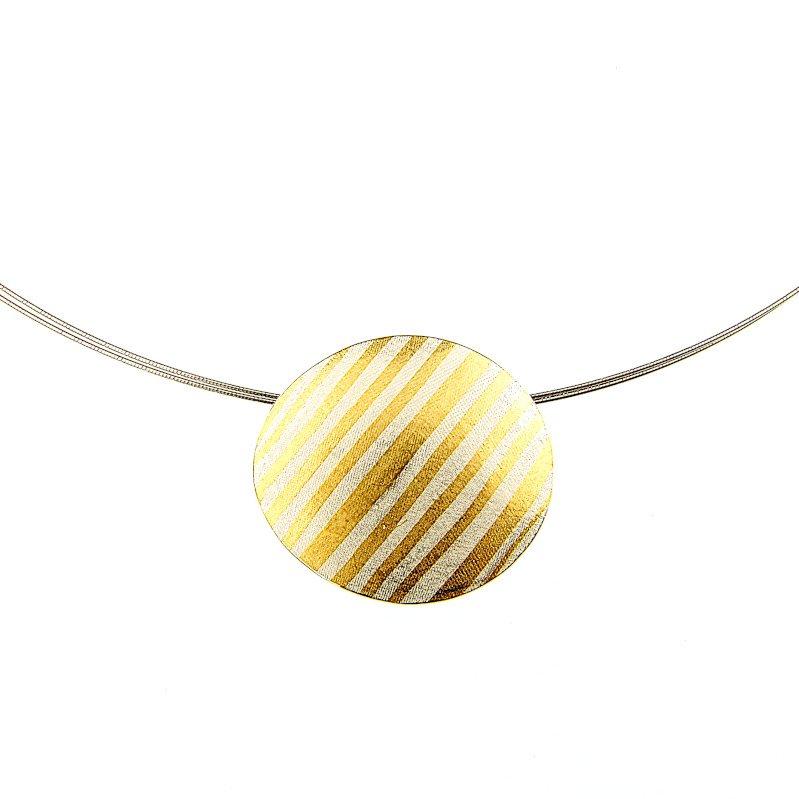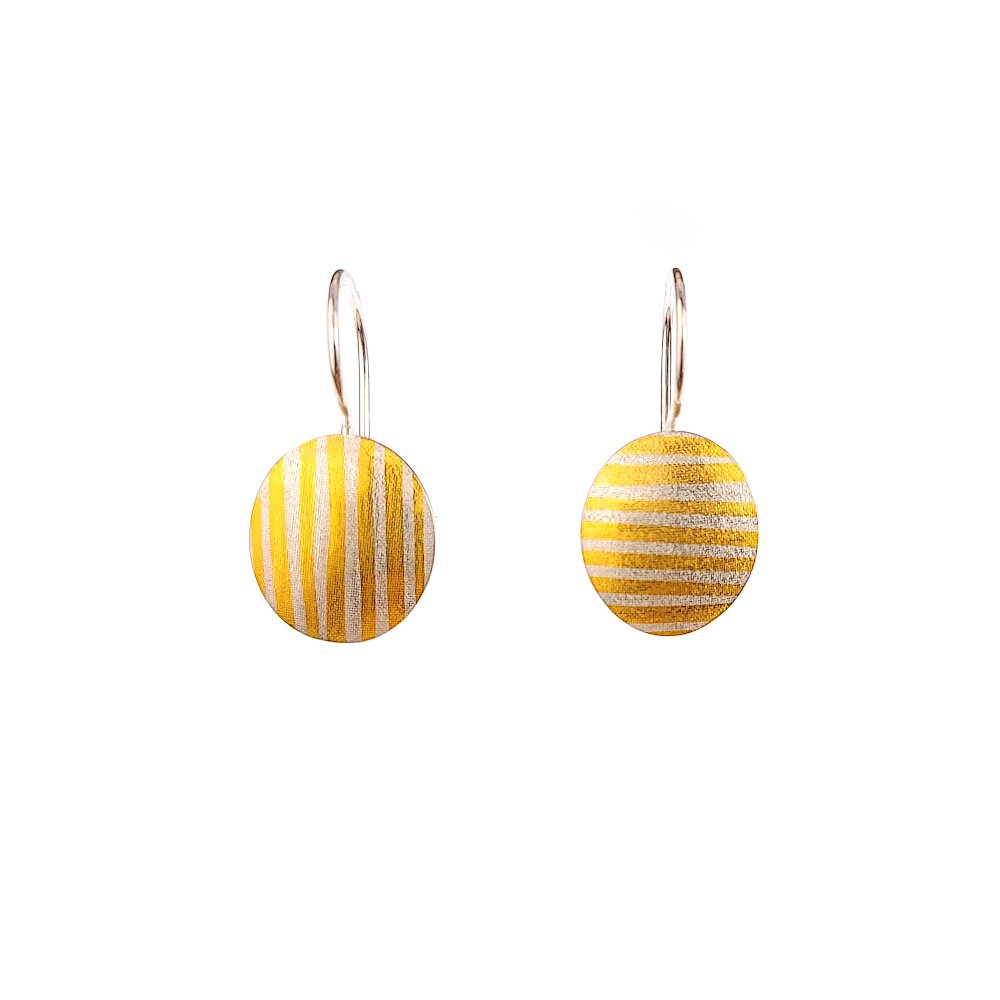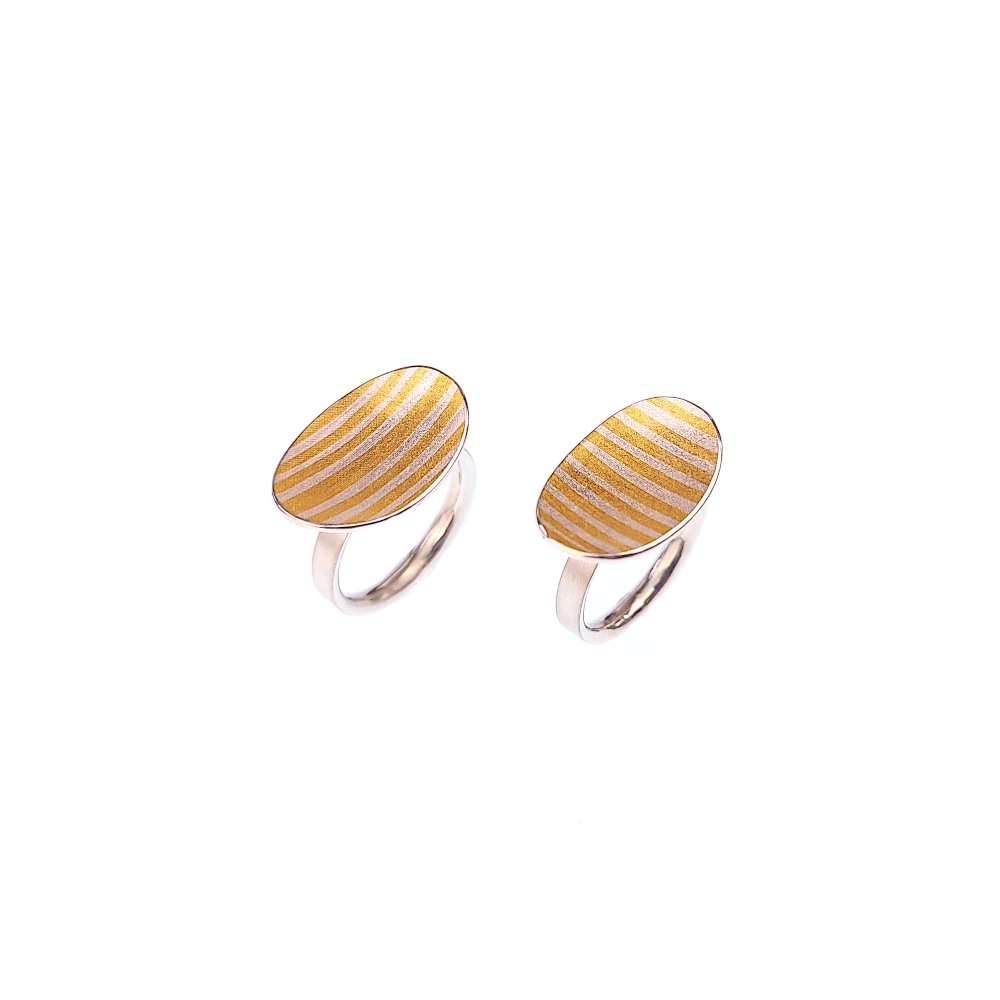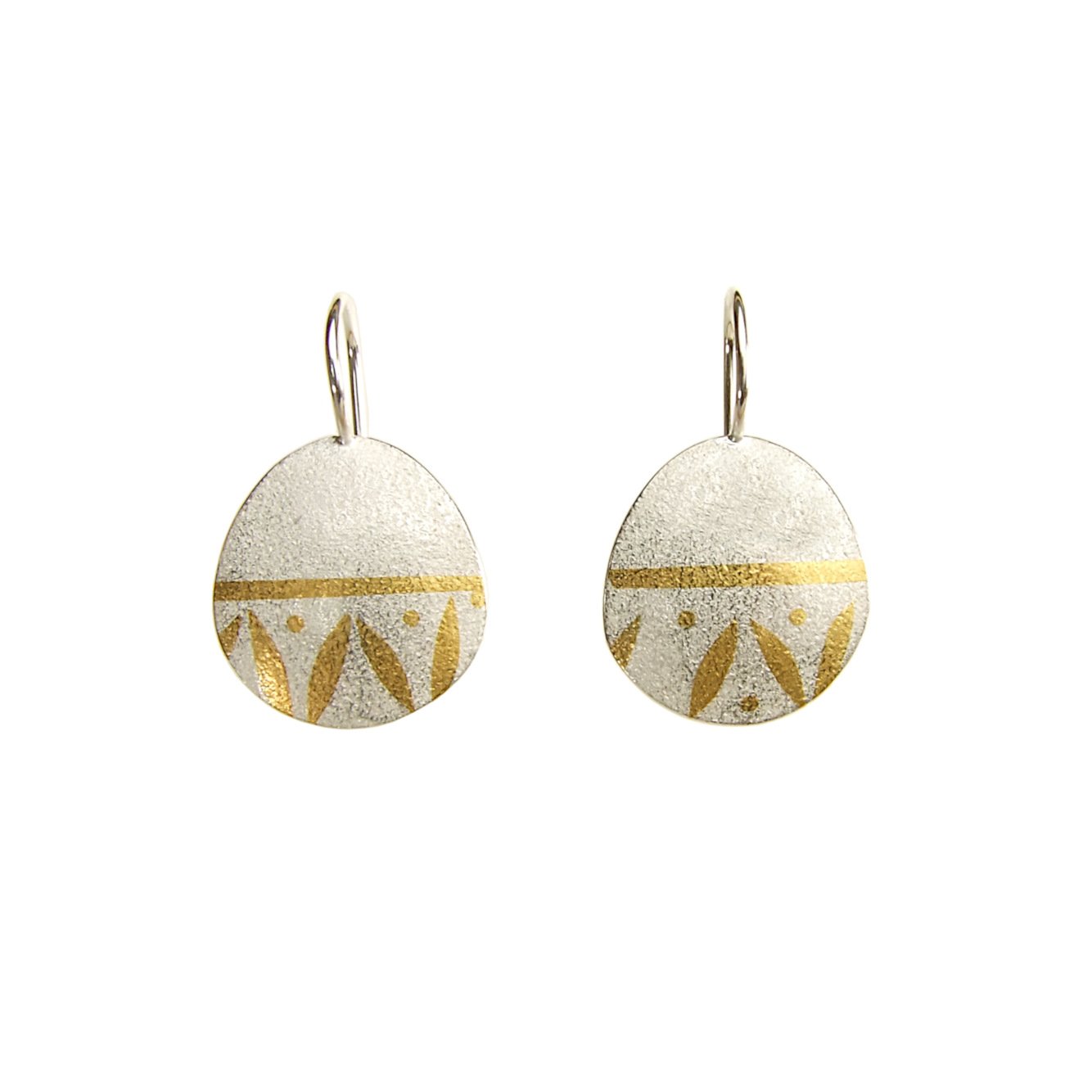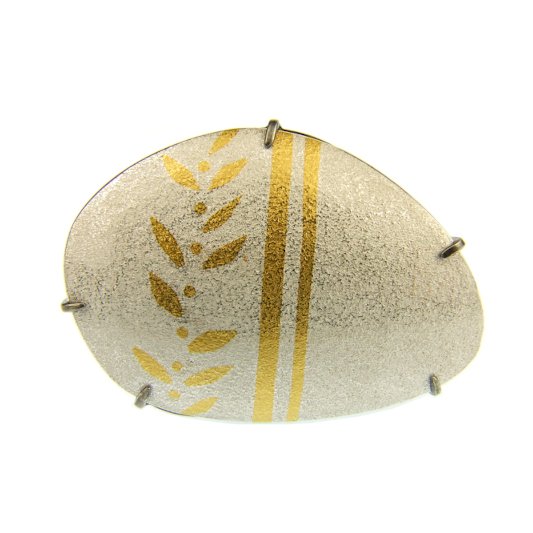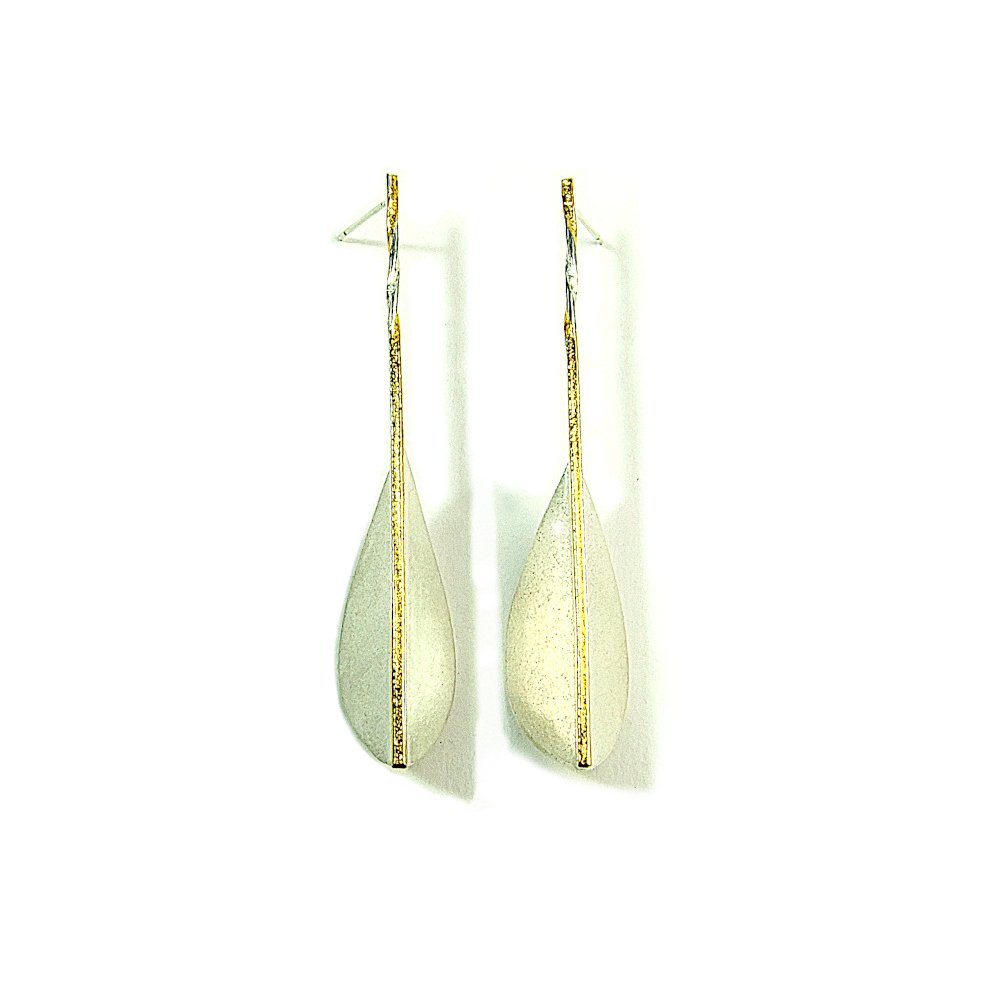Consequently, the Hallmarking Act does not distinguish between the different thicknesses of the gold plated layer. Whether the gold layer is 0.175 microns or, as in Keum-Boo, 13 microns – both are regarded as plating.
This has a bearing on my pieces in which I use Keum-Boo. As the gold layer is 13 microns thick – well below the required 100 microns - they can only be hallmarked as silver.
As the price of gold has risen over the years, jewellery made from solid gold is unaffordable for many. Adding a thin layer of gold over a base metal to give the appearance of gold but without the high price is therefore a very attractive option for many customers.
It can, however, be very confusing to distinguish between the different labels used by jewellers to describe their gold-plated pieces. They may come across words such as, Vermeil, Rolled Gold, Gold-filled, heavy gold plating, flash plating and of course Keum-Boo. Below, therefore, a brief explanation of the different terms:
Beforehand, however, a few notes to explain various differences.
Base material
As described above, in the gold plating process, the gold layer is added over a base metal. In cheap pieces the base metal is often copper, brass, zinc, etc., whilst in more expensive items it tends to be silver. Plating is also often applied to a gold base – a good example here are white gold rings which are plated with rhodium to give them the white lustre so desired.
Plating thickness
Different pieces of jewellery are plated in different thicknesses, dependent on their use. Pieces that are subject to greater wear and tear, for example rings, are plated more heavily, whilst earrings have a thinner coating. Earrings are typically plated with 0.175 - 1 microns, necklaces usually with 2 microns and rings with 3 - 5 microns.
When buying jewellery, it is worth bearing in mind that plating rubs off eventually and this is especially so for pieces that have to withstand a lot of wear and tear, for example rings and especially wedding rings. When the plating rubs off, the base metal is revealed and the piece has to be re-plated to restore its original beauty.
Legal requirements of gold plating
Countries have different legal requirements when it comes to hallmarking and the description of gold plated articles. This can be quite a confusing aspect when shopping online for jewellery as it may not be immediately clear where the company is based (and what the legal requirements there are), or whether the customers of a particular company are mainly based in another country.
I have, for example, come across online companies based in the UK, which also trade abroad. Their description of certain gold-filled articles states the adherence to certain legal requirements which - although they may apply in countries, such as the US - clearly do not exist in the UK.
Whilst in countries, such as the US and Canada, the use of certain words describing plating is defined by law, there are no such requirements in the UK. In a conversation with a specialist from the Birmingham Assay Office, the gentleman explained that there is no legal minimum or maximum thickness when it comes to plating.
There are, however, regulations as to how a piece can be hallmarked and described and this must be done so as to avoid any confusion for the customer. In the UK, all gold layers under 100 microns are regarded as plating and therefore cannot be hallmarked as gold.[5]
Vermeil
The word Vermeil is used to describe gold-plated articles. Whilst in the UK there are no such legal requirements, in the US this word can only be used to describe pieces of jewellery that are made of silver and which have been plated with a thickness of at least 2.5 microns and with at least 10ct gold.[6]
Gold-Filled or Rolled Gold
The term gold-filled or rolled gold is a little confusing. The metal is not literally ‘filled’ with gold but a layer of gold is mechanically bonded to the base metal. This base metal is usually brass and the gold layer can be of any gold alloy, but is often 14ct gold.
Again, US laws define the legal gold content of such articles which are to be sold in the US. The thickness of the gold layer is not given in microns but is expressed as a ratio of the overall weight of the piece. The gold content of a gold-filled item has to be 1/20 of the whole weight or, in other words, 5% of the total weight of the metal item.
This is quite a confusing method of describing the thickness of the gold layer and attempts to calculate the actual thickness concluded that the gold contents of the layer would roughly equate to the layer of gold in the Keum-Boo technique.[7] The fact remains that the base layer is brass, which is an alloy of copper (66%) and zinc (34%), chosen presumably because of the similar colour to gold which would hide any partial wear of the gold layer.
Due to the complex manufacturing process of gold-filled metals, articles made from this material are usually mass-produced.
Gold-filled jewellery can be hallmarked in the US – not the UK – and the hallmark would read, for example: 14K 1/20 GF. This would translate as follows: the piece is coated with a layer of 14ct gold to a thickness of 1/20 of its total weight, i.e. is Gold-Filled.
Heavy gold plating
This term refers to the thickness of the gold plated layer, specifically a thickness above circa 2.5 microns.
Flash plating
Flash plating is an extremely thin layer of gold that would wear off very quickly and refers to a thickness of less than 0.125 microns.
Silver gilt
Silver gilt or gilded silver refers to the coating of silver with a fine layer of gold. It is often interchangeably used with the word ‘vermeil’, mentioned above. The word ‘gilding’ is also used to describe the covering of various other materials (wood, ceramic, metal) with gold leaf. Gold leaf refers to ~23ct gold with a thickness of circa 0.125 microns.
Fast Jewellery











